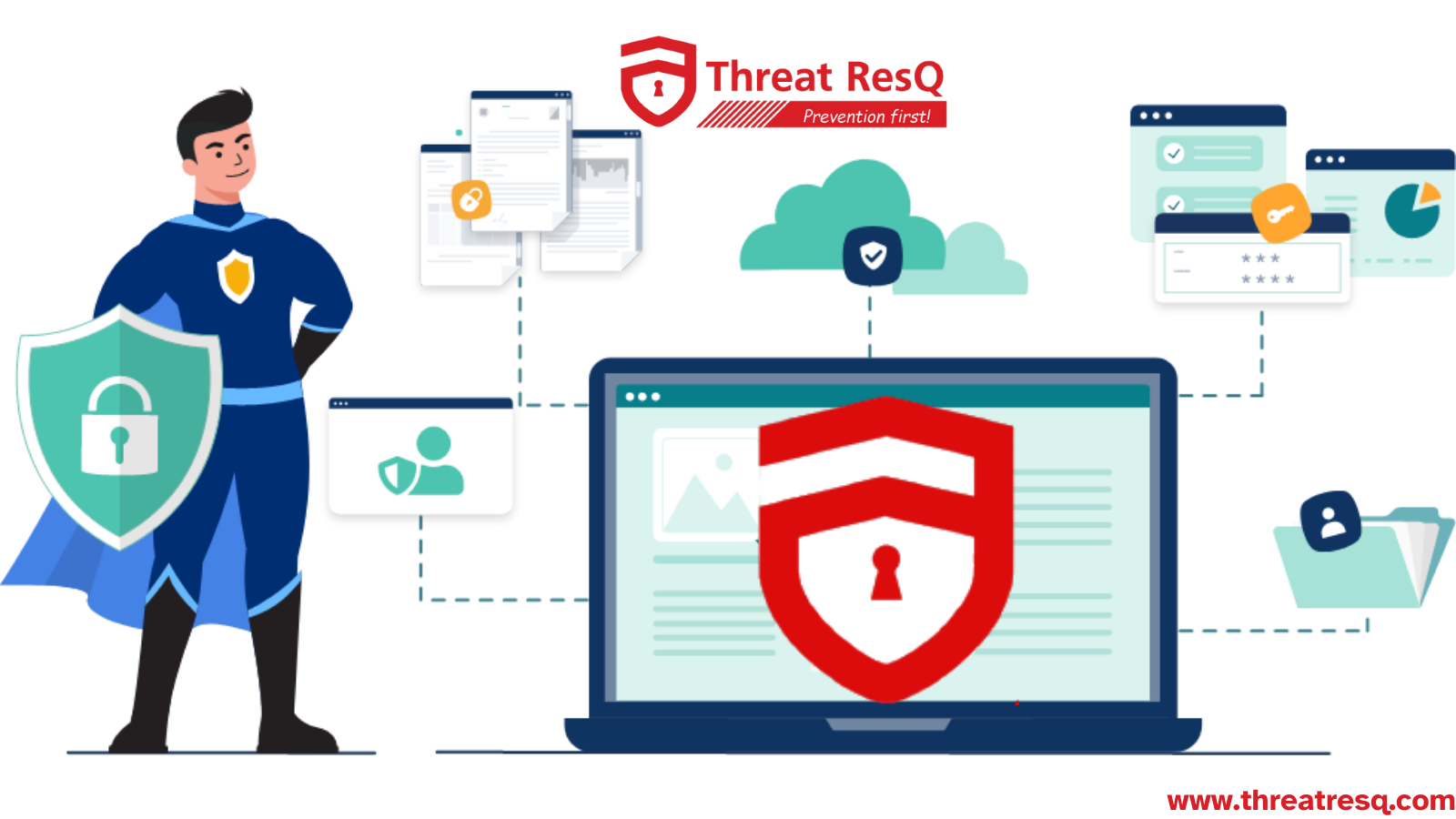- Join our company
- Email: info@threatresq.com
- Phone: (+91) 9910016361















As cyber threats evolve rapidly, protecting sensitive data and digital assets has become more crucial. Organizations must acquire new and advanced technologies to harden their cybersecurity defenses.
In this blog, Discover how we can leverage the power of Artificial Intelligence to identify, analyze, avoid potential risks, and conduct advanced Threat Detection. Read how ThreatResQ leverages AI to strengthen organizations’ cyber security posture.
Threat Detection is the process of identifying any malicious activity or recognizing potential risks/data breaches that could compromise the infrastructure’s network and then preparing proper mitigations to avoid the exploitation of those identified weaknesses or vulnerabilities.
A strong Threat detection and response team includes human force and technologies to deal with such issues. For example, If a data breach at a company has occurred, the threat detection team is responsible for analyzing and reporting the breach at the earliest possible time and implementing defensive approaches to avoid any further data exploitation.
The whole process of gathering information and knowledge about the potential risk or threat that occurred (For example, a data breach) is known as Threat Intelligence. It mainly involves collecting, analyzing, and interpreting the threat’s data, also known as the threat Intelligence lifecycle.
AI-powered Cybersecurity is a great blend of Artificial Intelligence capabilities with digital and cyber defense techniques.
With the help of algorithms and machine learning, AI can help in the quick analysis of vast amounts of data, spotting any unusual patterns in an enterprise’s infrastructure that may indicate potential security weaknesses or vulnerabilities.
Through AI, Cybersecurity teams can automate threat detection or risk assessment, leading to a faster response to threats and focusing on better threat response methodologies.
Threat detection blended with AI can strengthen cybersecurity defenses to great heights. At ThreatResQ, we implement AI algorithms to analyze large amounts of data and identify unusual patterns or activities that could be alarming for potential security issues.
This helps us with real-time threat detection and response, easily defending against attackers, and minimizing the impact of cyber incidents.
Below are some ways in which AI can be used in Cybersecurity and Threat detection:
Traditional cybersecurity methods depend on responding to incidents after they have occurred. However, ThreatResQ’s AI implementation enables proactive threat hunting. By continuously monitoring network traffic, log files, and user behavior, our AI algorithms can identify potential threats before they escalate into major attacks. When organizations integrate AI with threat detection, it strengthens their ability to protect against new cyber threats proactively.
Malware poses a significant threat to organizations’ cybersecurity. ThreatResQ leverages AI-powered malware detection techniques to identify and block malicious software in real time. By analyzing file characteristics, behavioral patterns, and known indicators of compromise, ThreatResQ’s AI-driven solutions enhance the organization’s ability to defend against malware attacks and prevent data breaches.
ThreatResQ uses advanced predictive analytics to evaluate an organization’s cybersecurity risk. Through analyzing threat intelligence data, historical data, and industry trends, threat detection integrated with AI can identify potential vulnerabilities and predict the occurrence of future cyber threats.
This allows organizations to predict and tackle the risks through relevant security efforts and allocate resources effectively to mitigate the most significant risks.
The capabilities of UEBA implemented with AI provide a better look into user behavior, helping organizations detect insider threats, account compromises, etc.
We can establish a baseline of normal behavior and then continuously monitor the variations.
Through this, ThreatResQ’s solution can spot unusual patterns in user behavior that could suggest threats or compromised accounts.
Machine learning-based implementations will always make smart decisions related to any kind of threat. It is very possible that Rule-based software or automation might flag or block normal network traffic, even if it contains harmless files.
ThreatResQ’s Machine learning algorithms don’t rely on rigid rules and heavily depend on repeated learning through the data, helping to make better and smarter decisions without mistakenly blocking normal network traffic. This ensures a better and more efficient experience without compromising security.
With threat detection and automation implemented through AI, security teams can efficiently and effectively analyze large amounts of security data, allowing them to easily identify potential risks.
This helps analysts by reducing the time and effort and helps them focus more on other critical security issues. Such automation through AI can also be implemented into incident investigation and digital forensics.
AI’s analytics and continuous learning capabilities help organizations stay ahead of cyber threats, improving the cybersecurity defenses of the organization.
AI-driven threat detection works great at detecting challenging threats, unknown malware, etc. that may not be possible for humans to identify. AI’s machine learning analyzes behavior to detect new malware.
Such adaptive nature of AI helps it to continuously learn through data and increase the accuracy of its decisions on incidents. This keeps organizations ahead of evolving cyber threats.
Automation through AI power helps avoid routine manual tasks like log analysis and vulnerability assessments, reducing the need for manual intervention, which in turn reduces the cost associated with it.
Overall, AI enhances the use of resources while at the same time saving valuable or unused resources for organizations.
AI-powered Cybersecurity or Threat detection will become more advanced in the upcoming future as the technology continuously evolves. This will help organizations become more aware of security threats and proactively work on their defensive infrastructure.
The ongoing research and development in AI is evident that it will only improve and become better by time which will result in better cybersecurity strategies and defenses.
AI-powered threat detection is revolutionizing the cybersecurity landscape, enabling organizations to strengthen their defenses against evolving cyber threats.
ThreatResQ’s advanced AI-driven cybersecurity solutions leverage the power of artificial intelligence to proactively identify and mitigate emerging threats.
By harnessing AI’s capabilities in threat hunting, malware detection, predictive analytics, user behavior analytics, and security operations automation, ThreatResQ empowers organizations to enhance their cybersecurity posture.
Embrace the power of AI with ThreatResQ and stay ahead of cyber threats in today’s rapidly evolving digital landscape.